Read the article below for an insightful exploration of the rise of “chola” fashion and identity both within and outside of Bolivia.
When Indigenous Fashion Hits the Runway, Details Matter
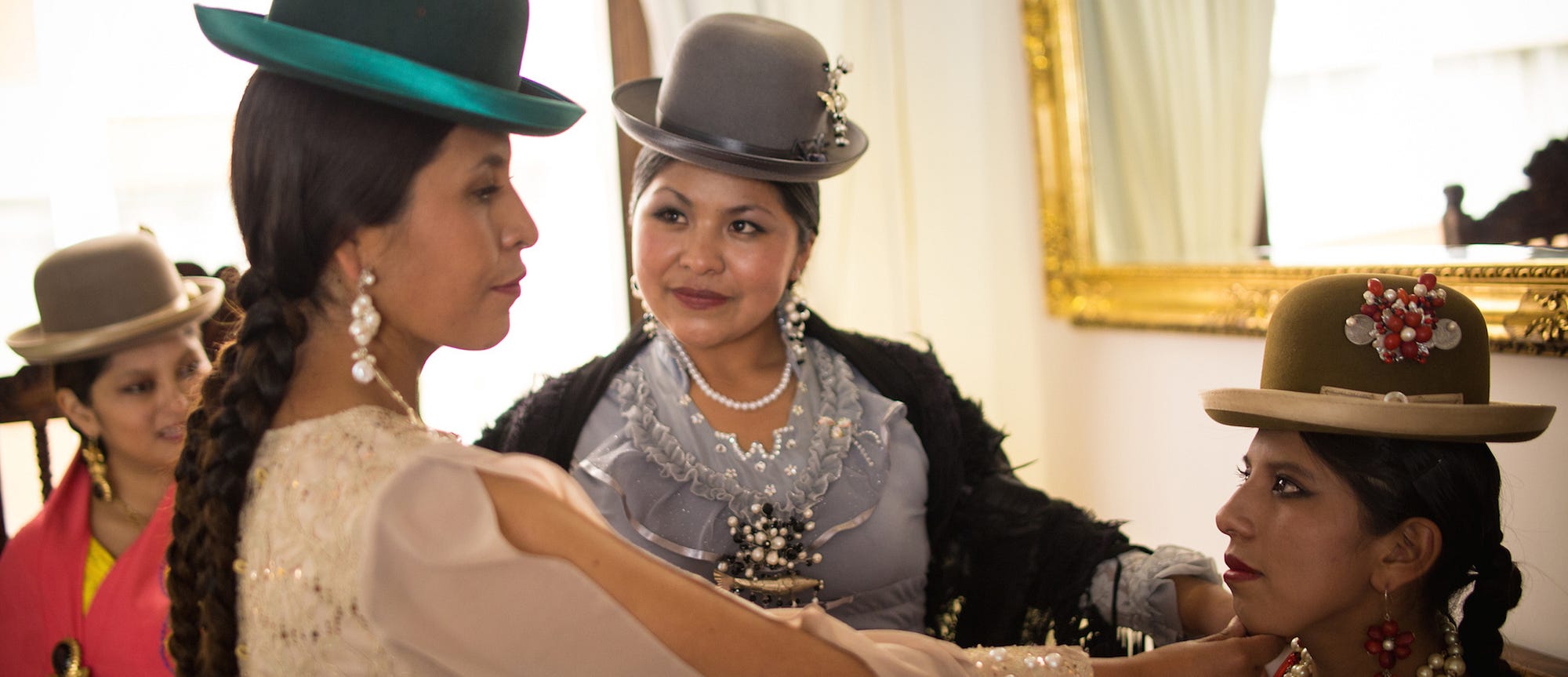
Fifteen years ago, Glenda Yañez put on the clothes of her ancestors. She had always admired how her grandmother dressed—her wide, layered skirt; a thick embroidered shawl; and a top hat leaning just so, two long and dark braids coming down her back. Yañez, who grew up in the bustling city of La Paz, Bolivia, had come of age in jeans and T-shirts.
That’s because her grandmother’s indigenous dress — known as the chola style — had for centuries been a target of acute discrimination. For most of Bolivia’s history, a Spanish-descended, white minority lorded over the country’s native majority in a system akin to apartheid. The chola wardrobe is a fashion distinctive to Bolivia’s second largest indigenous group, the Aymara people. And it’s one that has endured since the 1700s, even though it has brought with it heightened segregation.
Yañez’s grandmother would have been expected to use the service elevators in downtown apartment buildings and was not welcomed in upscale restaurants. Cholas were de-facto barred from certain neighborhoods and occupations such as judgeships, government offices, and most of academia. Yañez remembers her grandmother recounting the shame she felt when walking into government buildings. With each new generation, many mothers—including Yañez’s — chose to spare their daughters similar fates.
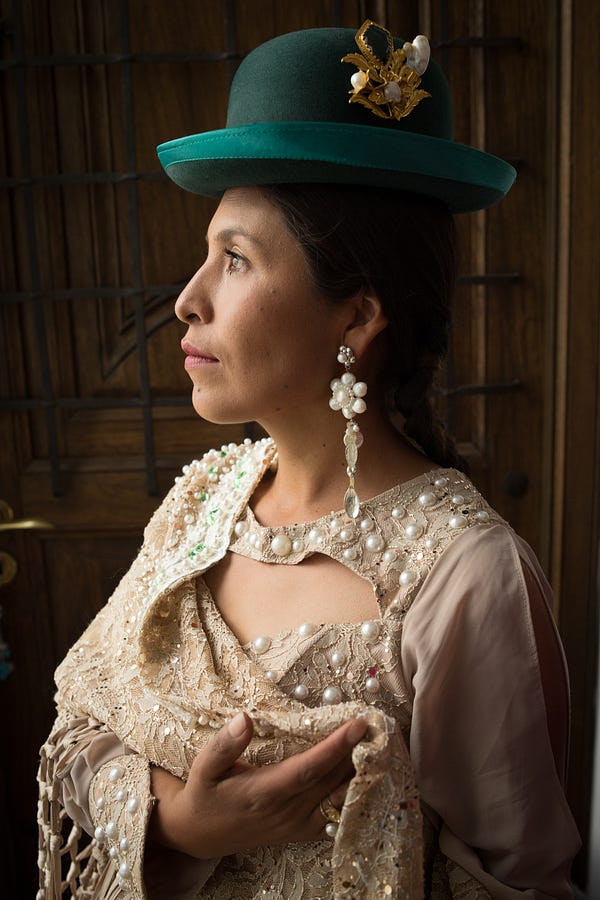
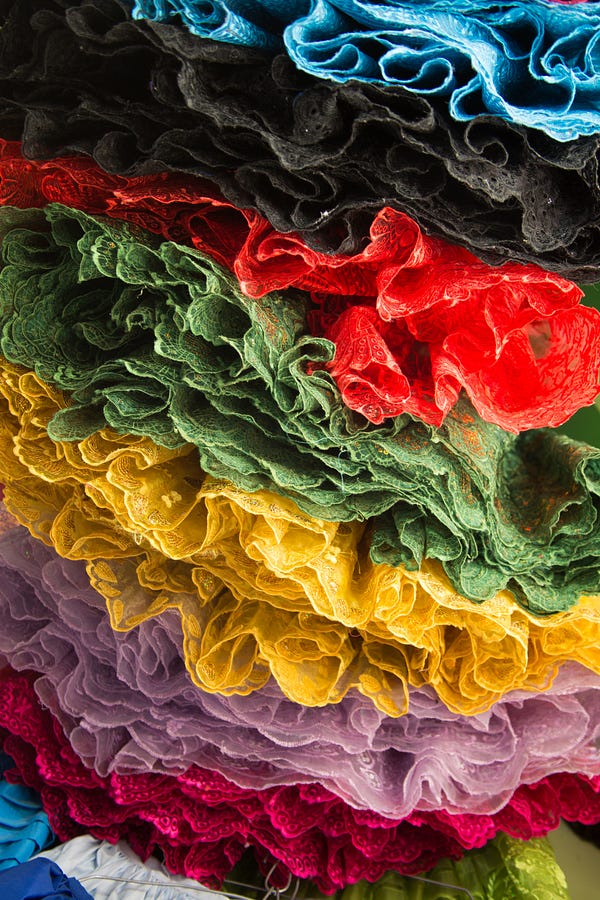
But by the time Glenda Yañez was in her 20s, Bolivia was on the cusp of change. The 1990s had brought a wave of indigenous power protest, and in 2005 the country elected its first indigenous president. As Bolivia’s original occupants gained increasing economic and political power, the once-stigmatized Aymara dress saw a resurgence.
Cholitas, as they are affectionately known, now star in commercials and line high-fashion runways. The dress of indigenous Bolivians is today “a status symbol,” said La Paz-based economist Valeria Salinas Maceda, who specializes in the study of Bolivian culture. It’s gone from an object of scorn and stigma, to one of fashion phenomenon.
Women like Yañez, now 37, have not only reclaimed their grandmothers’ style, but are capitalizing on the up-and-coming industry of chola fashion. Founder of one of the country’s first indigenous modeling academies, Yañez’s studio takes up a large two-story apartment in La Paz. Hovering over dark, wood-paneled floors are several oversized mirrors with elaborate, ornamental gold framing. In one room, a series of portraits — chola headshots and bible scenes — line the wall.
On a recent September morning, nine models-in-training gathered for class. Since opening last year, The Chola Studio has graduated 50 women and currently represents 20 models. With chola images increasingly appearing on billboards, in TV shows, and now on the insignia of La Paz’s City Hall, the aesthetic and Yañez’s business are expanding.
Her current students, all of whom have day jobs, are a gaggle of vibrant color, tassels, sparkles, sequins, and gaudy jewelry. “We teach women how to do their own makeup, braid their own hair, what the basic color combinations they should have in their wardrobe [are], and what the latest trends are,” Yañez told me when we spoke by phone.
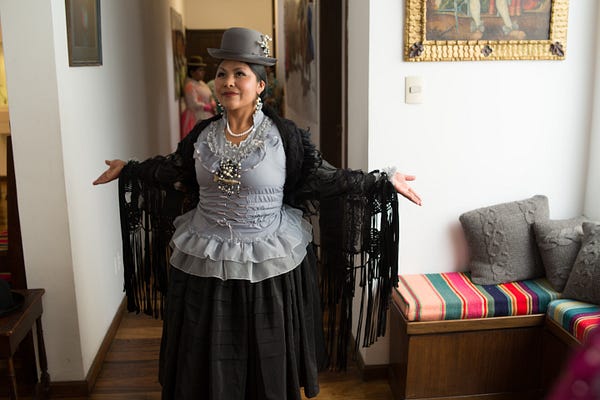
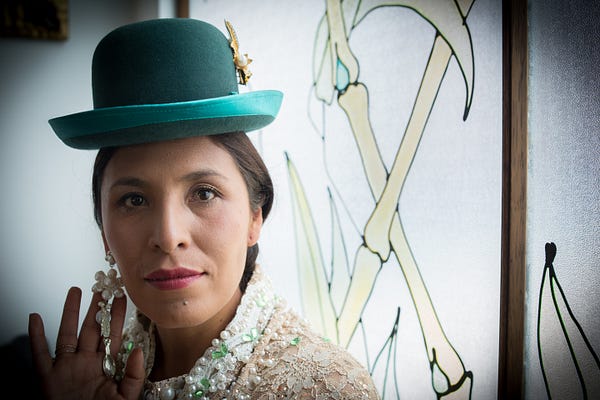

While several weeks of the three-month curriculum are dedicated to learning how to dominate a runway, the models also have coursework. Yañez said that her cholita models are often asked about the origins of cholastyle when they go on shoots, so she believes they should be well versed in the tradition’s history. They learn about how Spanish colonizers forced the pseudo-European wardrobe onto La Paz’s mestizo-indigenous in an effort to break the connection to their rural, native relatives and undermine their heritage—this all in response to the bloody uprising of the Tupac Amaru in 1780, which nearly toppled the Spanish regime in the Andes.
In an attempt to wipe out all trace and memory of the rebellion, said economist Salinas, city-dwelling women were obligated to wear a pleated skirt, blouse, and a shawl with tassels. They were given the name “cholas” because of the similarity between their dress and that of Spanish “chulas” — the wives of the assistants to Spanish bullfighters.
But over time, the colonizers’ plan to use dress to subdue the Aymara spirit all but backfired: The Aymara women owned the style. The skirt — known as the pollera (also used as shorthand to represent the entire outfit) — spread to the villages, the women together committing to the wardrobe as a lasting expression of cultural unity. This comes as no surprise to anyone who’s spent time in Aymara communities. The group has a reputation for fortitude, strength, ethnic pride, and, yes, stubbornness.
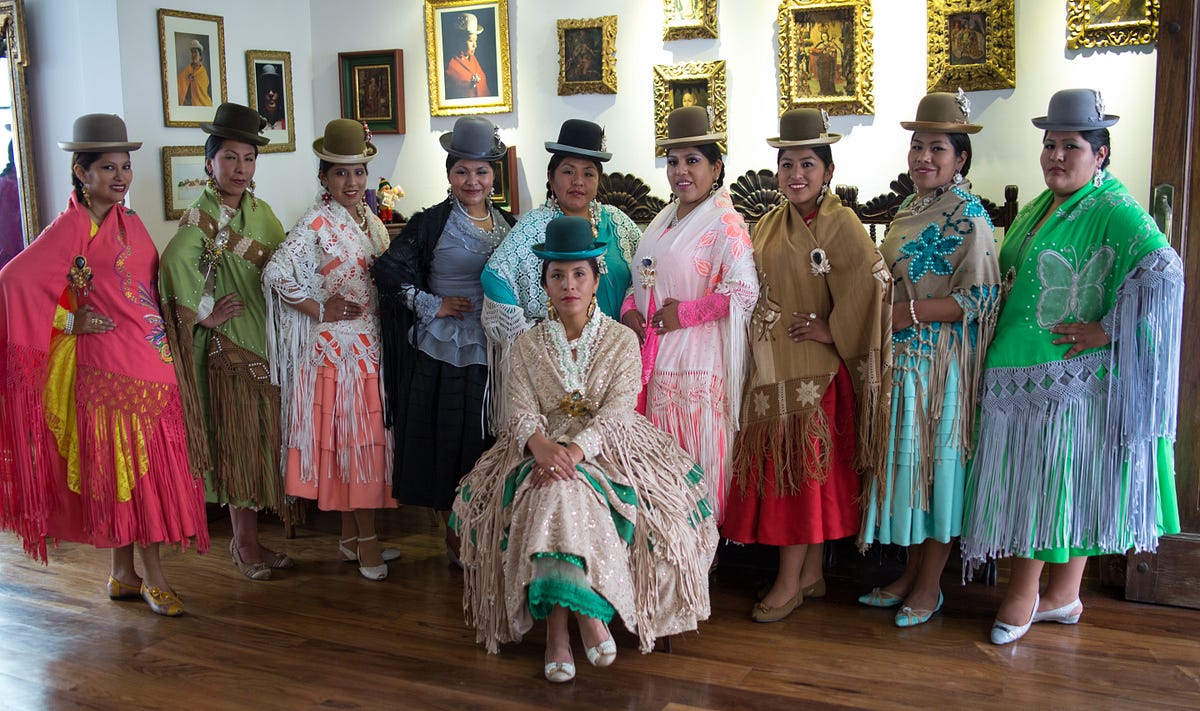
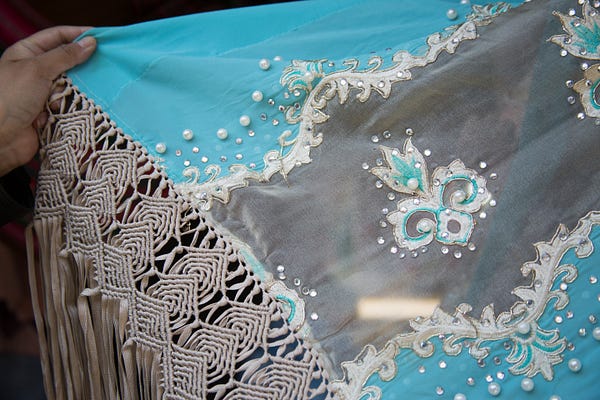
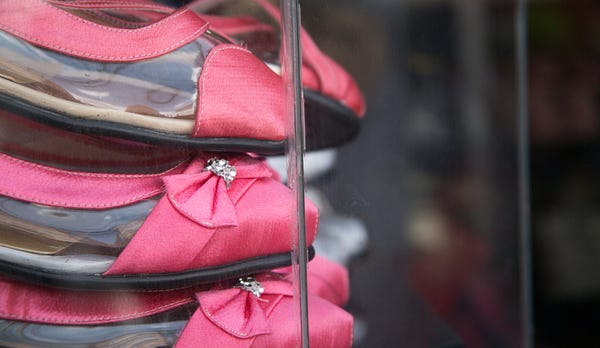
Today, chola dress has six integral parts: 1) the wide, pleated pollera skirt worn high on the waist to accentuate a woman’s rear; 2) several layers of colorful, visible petticoats below; 3) a heavy shawl that’s embroidered and has long tassels on the ends, fastened with a broach; 4) a round bowler hat; 5) flat pumps; and 6) matching, often ostentatious, jewelry. Just as Indian saris range from those worn daily to others donned for weddings, the Aymara wardrobe can be dressed down or up. The chola aesthetic refers to the classier, elaborate end of the spectrum.
It’s not clear how or why this specific — and somewhat odd — combination of items has become the Aymara uniform. The bowler hat draws the most speculation. The story goes that in the 1920s, British designers hoping to sell them to railway workers overseas miscalculated a serious fashion flop. When the hats arrived in Bolivia, their sellers told locals they were fashionable among European women at the time (not true) to unload the cargo. Aymara women bought the tale — and the hats. That this assortment of clothing has hung together despite attracting such scorn and prejudice over the centuries, and then transformed into a bona fide fashion trend, is a remarkable trajectory.
Yañez still remembers the days when she was the only woman in professional circles in La Paz wearing chola dress. It was on one such day in 2010, in fact, that her modeling career began. She attended a conference for small businesswomen in La Paz and was the only one in pollera. The event photographer caught a few shots of her, and several days later she got a call from the conference organizers: An advertising agency had seen the picture and wanted to hire her for an ad. She said yes; more offers followed.
At the time, said Yañez, there was only one modeling agency for chola women and she was turned off by its ethos. “They were doing a selection process,” she said. “They only wanted the youngest and most beautiful.” Yañez believes that chola fashion is better than that. “I think every woman is beautiful, especially in a pollera, and especially the chunky ones!” she told me. That’s why she opened her own studio, welcoming any woman with a love of the pollera and fashion.
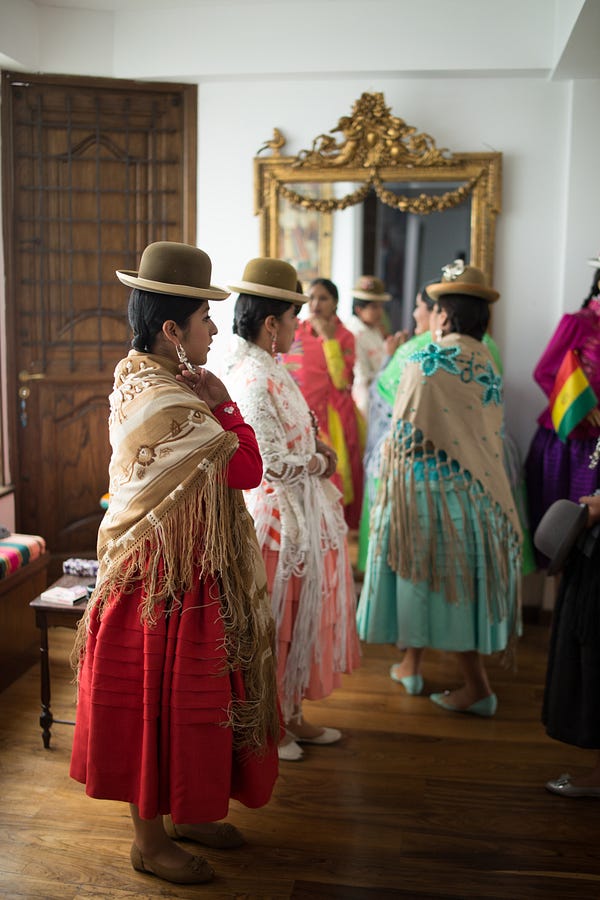
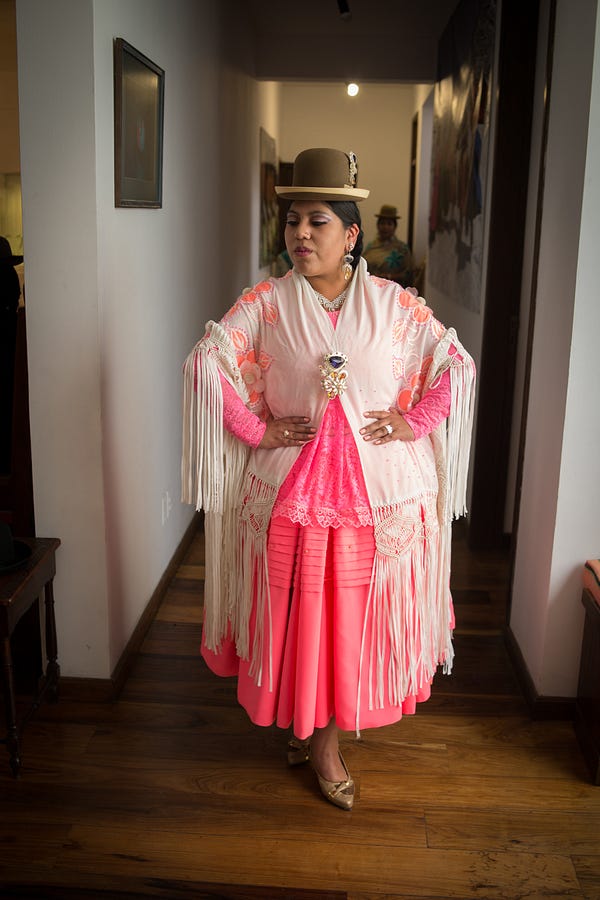
This approach is what attracted Carla Antonia Vega to the style. Vega is the newest face of one of Bolivia’s largest banks, Banco Union. “I’d never done anything like it,” she said of the recent video promo shoot with the bank, where she had her hair and makeup done by professionals. “It was a wonderful experience.”
Like Yañez, Vega did not grow up wearing Aymara dress. But after graduating from university, she started dancing in Bolivia’s folkloric festivals, which have always showcased elaborate chola outfits. Vega also had a childhood fondness for the style — similarly imbibed with memories of her grandmother — and said she was drawn to the idea of modeling after seeing cholitas on TV talk shows and in magazine ads.
Vega is convinced that pollera popularity is a result of President Evo Morales’s election. Salinas, a foremost expert on chola fashion in Bolivia, said Morales should be recognized as a catalyst for a process already underway. “The endurance of chola dress is due to the strength of chola character,” she said. “They are dedicated workers with a great capacity for doing business, and they themselves make sure they aren’t left behind.”
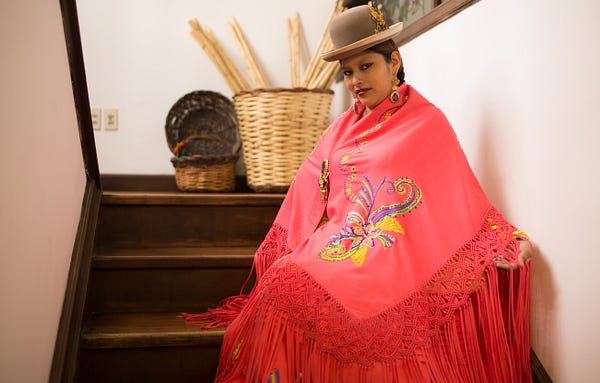
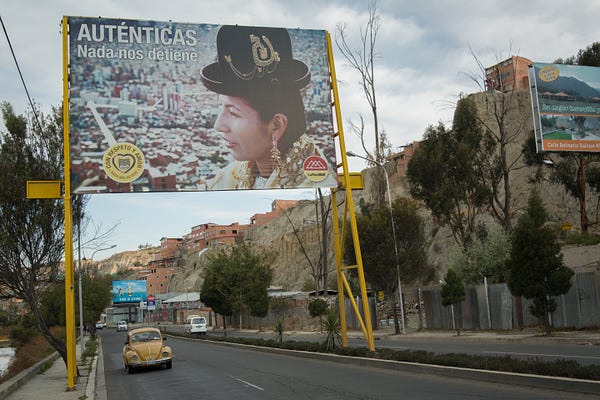
The political reckoning of the first indigenous presidency surely bought an important shift in national optics, though. Not only was an indiocommanding government, but a mass of indigenous politicians flooded Parliament and lower level offices as well. Many of them were women, and many of them wore their polleras to work. (Morales himself refuses to don a suit, preferring tailor-made sports coats with native weavings across the chest.)
With this transition, the indigenous people also earned more buying power. During Morales’s tenure, the Bolivian economy has been one of the strongest in Latin America, and the Aymara sector has faired exceptionally well. “Commerce led by Bolivia’s indigenous has, for a long time, been a very important economic activity,” said Rosanna Barragan, a Bolivian historian whose research focuses on urban and labor studies. In the last 10 years, she noted, this sector has grown considerably. Along with it, Aymara tastes and aesthetics have likewise gained increasing popularity. The rest of the business world — the companies who want this group to buy their products and services — have responded to the emergence of what some consider a new indigenous bourgeoise. “Fashion is a market trend,” Barragan said.
The Wilshire Boulevard of the Aymara world teeters on the east-facing slopes of the city of La Paz. Max Paredes street is wildly chaotic—too many public transport minivans, too few traffic laws. The shopping centers that line the broken sidewalks are narrow and deep, each one a maze of shops and stalls offering the best of chola fashion.
Here one can find every signature element of the chola outfit — and it’s not cheap. An affordable, but respectable ensemble for going out ranges from $1,500 to $2000. It’s $200 to $300 for handmade manta and pollera; $100 for shoes, blouses, and petticoats; $150 for the hat; and $800 for the jewelry. This pales in comparison to the price of the outfits some women buy for Gran Poder, the most important of the folklore festivals. Those can cost upwards of $10,000.
To the untrained eye, the differences between a very nice and an exquisite ensemble are hard to detect. Yañez laughed when I mentioned this. “We can tell the difference,” she responded. Every detail connotes a certain status: the girth of the pollera, the number of pleats, the complexity of the manta’sembroidery and its adornments. Most especially, women are on the lookout for whether another woman’s accompanying jewelry is made with real or imitation gold. (The latter is not looked upon fondly.)
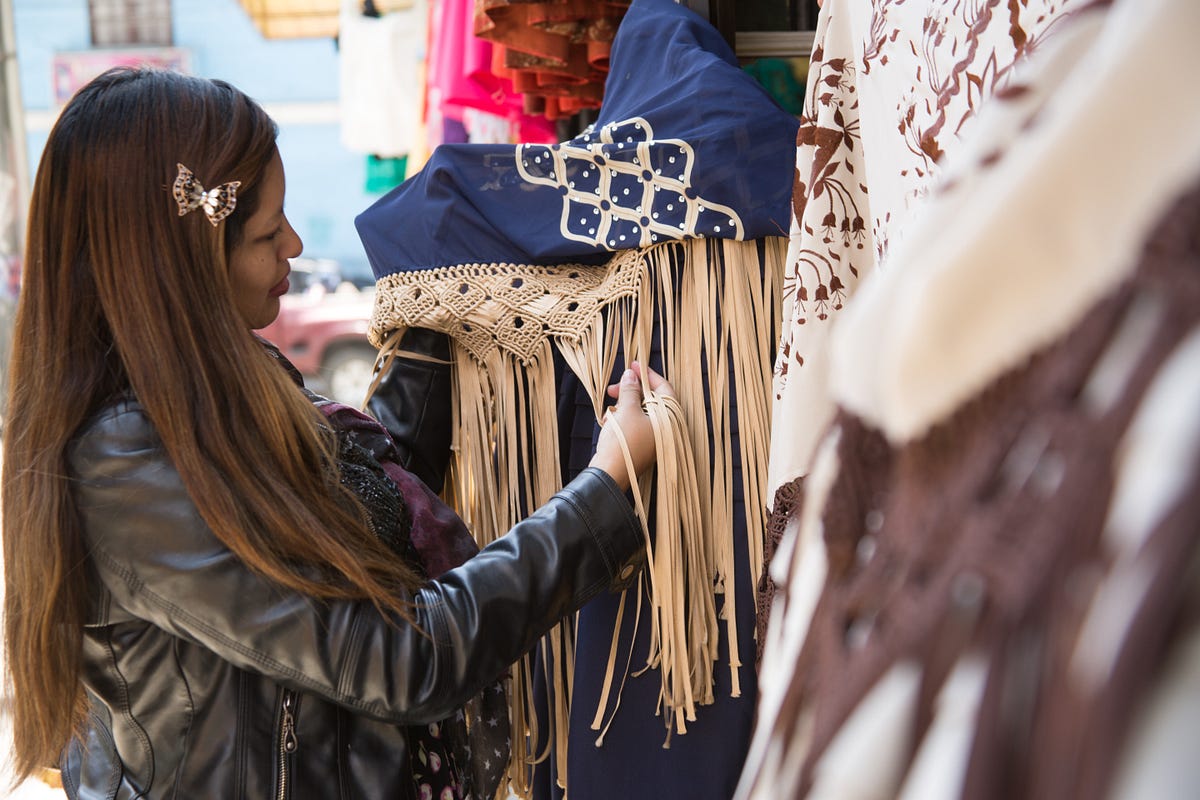
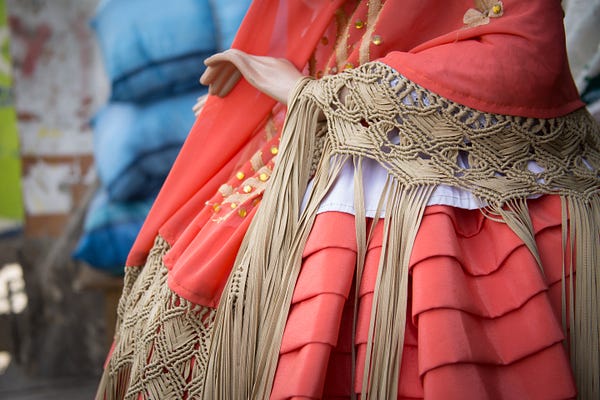
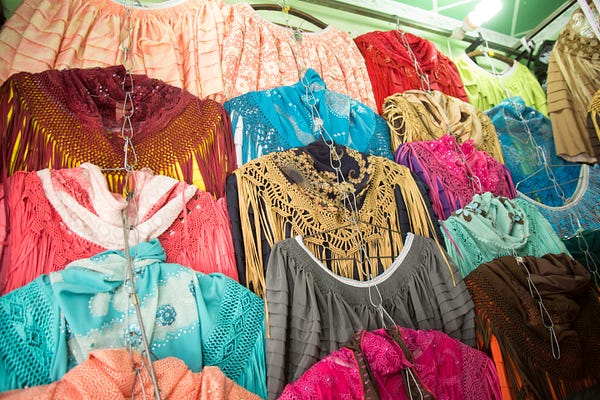
Though the main elements of the wardrobe are unwavering, chola wear — like all fashion — evolves. Recently, for example, hats are changing. They are getting shorter and are now available in green and blue. Before, the only options were black, gray, or brown.
Shifts like these are propelled by designers looking to take chola fashion to the next level. “We are always innovating,” said Veronica Limachi, the founder of Danzart, a small chola design and manufacturing company. Veronica calls her work “vanguard,” incorporating things like feathers or small mirrors into her designs. She takes inspiration from international runways — she’s working a lot with pastels this year — and “frompachamama, or Mother Earth,” she told me. “We design for distinct tastes.”
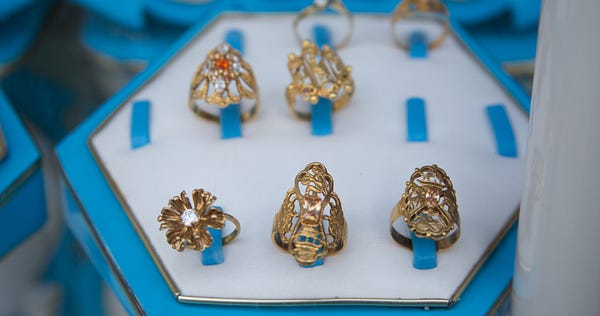

This kind of innovation is widely celebrated in La Paz. Other innovation is not. This year, La Paz hosted its first fashion week. On the runway, one designer turned heads by daring to put her models in narrow-toed, thin heels, and very low-cut blouses. “I spoke to her after the show,” said Salinas, referring to the controversial designer. “She admitted to knowing nothing about the history of the clothes and to having started to wear the pollera only a few years ago, because she thought it would be good publicity for her company.”
Salinas, who called this variation “a transgression,” said that while designers should be free to be creative, they ought to respect the primary elements of the ensemble and the roots of the style — such as modesty (that means no low-cut tops). “You can create fashion by respecting limits,” Salinas told me. “You can be creative without distorting identity.”
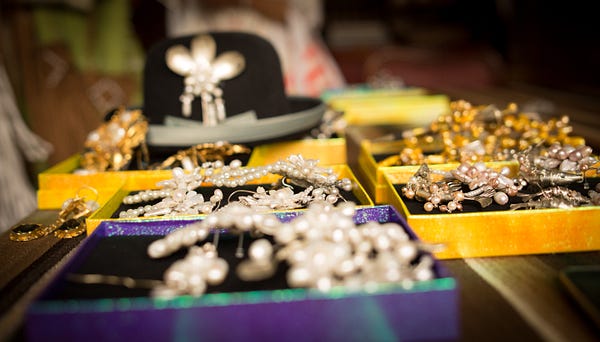
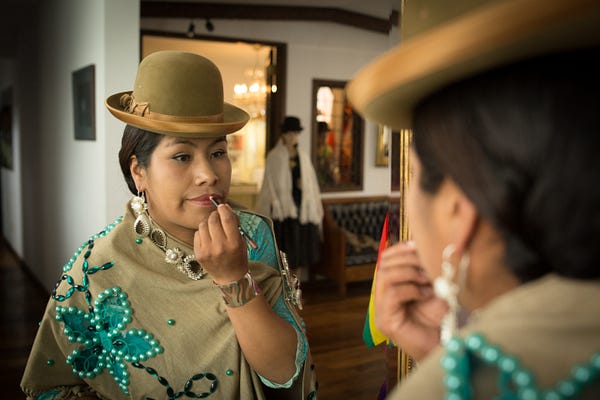
Another recent controversy is the emergence of designers who are catering to size-zero bodies. Those involved with chola fashion are proud that the dress was derived from the petite, round figure of the Andean indigenous group, and insist that it looks best on this body type. Though that hasn’t apparently stopped some designers from trying to see if it will play well with other women.
These kinds of disputes have put the wardrobe and the identity it represents at a crossroads. How this plays out has implications well beyond the Andean highlands. That an indigenous custom not only holds strong in the 21st century, but has also become a national trend, is a sign of the strength of those who kept the custom alive. But it also puts those same people in a position to lose control over what was once wholly theirs.
One need look no farther than the once-indigenous practices that have already been appropriated and spread over time — yoga, prayer flags, African drumming—to see that when a tradition gains a foothold outside its originating group, the practice will morph in ways that feel like betrayal. Aymara dress may not be a global phenomena, but its emergence on the high-fashion scene offers a peek into what happens when a deeply rooted custom begins to shed its singularly ethnic boundaries.

To that end, there’s also conversation about whether, locally, chola fashion will find its way back to more traditional, daily usage — or if its popularity will be confined to the world of festivals, parties, and runways.
Vega is a case in point. She owns a liquor business and doesn’t wear the pollera regularly. “It’s not comfortable for my work,” she told me. Throughout La Paz, its neighboring city of El Alto, and into the rural highlands, however, there are still plenty of Aymara holdouts doing all kinds of jobs — from construction to farming — in their polleras, just as their mothers and grandmothers did before them.
“It is a paradox,” said historian Barragan, one similar to the pollera-wearing women who are proud of their heritage but don’t dress their daughters in chola fashion except for festivals and celebrations. “On the one hand, you’ve got self-esteem and pride,” she said. “On the other, there’s abandonment.”
Regardless, Salinas believes the return of chola fashion to the national stage is staying true to its origins of endurance and resistance. “The chola fashion industry emerged out of a chola revolution … Chola women forced a conversation about clothes, fashion, and identify,” she said. “Through this, they emitted the message: ‘We are here and we want to be seen.’”
For her part, Yañez is leaving the decision up to the next generation.She has two daughters, ages 14 and six, whom she has always dressed in non-traditional kids clothing. Already, though, both are showing interest in the style, as they help her dress and ply through her closet.
“They are starting to develop that passion for the pollera,” she said. Particularly, it seems, the six-year-old. She already tells her dad: ‘You have to buy me real jewels, the ones made of gold.’”
*Many thanks to Bolivian photographer Yvette Paz Soldan for photographing this story.
